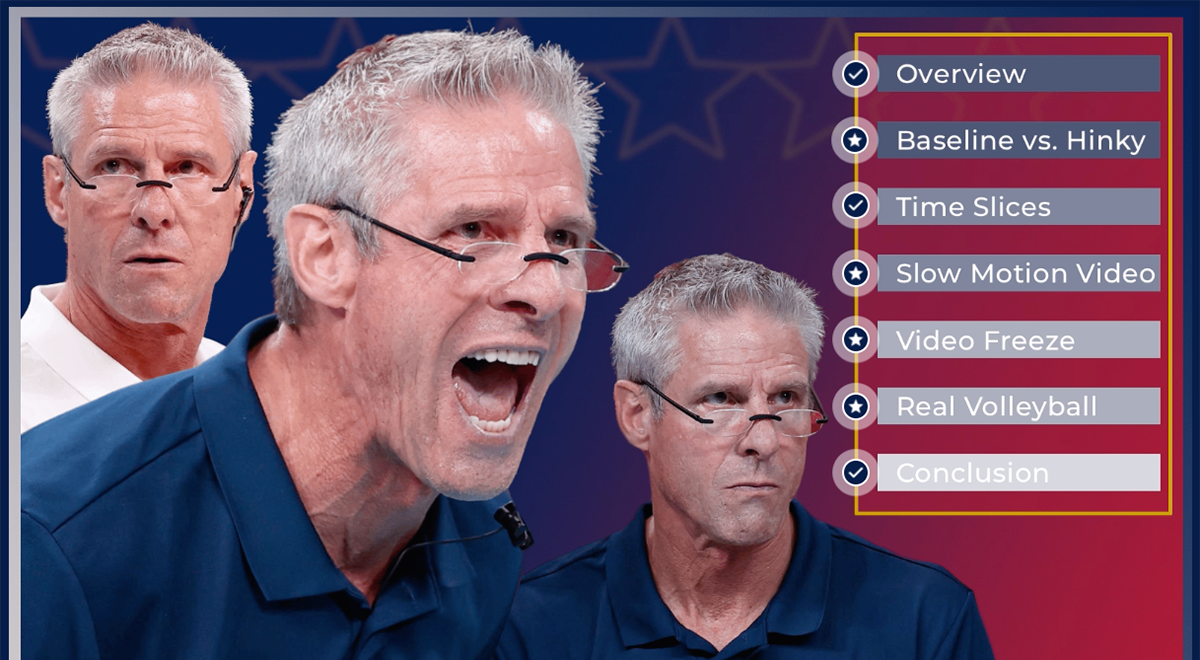
The following is an excerpt from an upcoming module included in USA Volleyball’s new online coach education program, the Coach Academy. The module is taught by U.S. Women’s National Team Head Coach Karch Kiraly and focuses on the concept and skill of reading.
The Skill of Reading
Reading is a premier skill of any sport or game. In our sport, it is associated with having a high volleyball IQ or strong court sense. Karch Kiraly defines reading as “perceptual expertise,” or the ability to respond quicker by seeing patterns unfold earlier.
Those with high perceptual expertise don’t achieve their skill through having better sight or being born with it, they learn and train it. Perceptual expertise can be taught and “visual encyclopedias” can expand through repetition, exposure to the game, and even utilizing video and other visual resources when otherwise not on the court playing the game.
Many of the ways in which Karch recommends training reading to your athletes includes:
Baseline versus Hinky
- You and your athletes must understand the difference between baseline and hinky movements and patterns.
- Baseline refers to traditional patterns or movements often seen in volleyball. For example, a traditional three step approach, a regular float serve, etc. would be a baseline movement. There’s nothing odd or different about it.
- Hinky refers to any movements that might be non-traditional or deceptive. For example, seeing a higher elbow when an athlete executes an off-speed roll-shot or serve, or noticing an athlete’s change in posture or speed of approach when tipping a ball would be a hinky movement.
- Physically demonstrate a baseline movement or a hinky movement to help expand your athletes’ visual encyclopedias.
Time Slices
- Take two different images, one baseline and one hinky, of the same skill and practice identifying what differences can be recognized between the photos. Comparing baseline to hinky movements through time slices can help you and your athletes better recognize in-game when patterns or movements are baseline and when they are hinky.
- Example: take a photo or pause a video on a traditional jump serve and compare it to one of an off-speed jump serve. Note the athlete’s posture, position to the ball, distance covered in approach, height of elbow before contact, etc.
Slow Motion Video
- Watch video in slow motion. Slow motion video provides more time to study how certain patterns like attack routes, defensive systems, or plays unfold.
Video Freeze
- Pause video right before an action takes place, then try to read what will happen next.
- Example: pause a video right before a setter sets the ball and try to guess where the ball will be set based on posture, location on court, footwork, or other characteristics you can note. You can freeze video with your athletes and review together.
Gameplay Teaches Best
- There is no better substitute for reading the game than in live gameplay, be it a match or practice.
- Provide plenty of opportunities for yourself and your athletes to watch and participate in real volleyball.
Patterns and plays are always unfolding in the game of volleyball, and Karch believes it is essential we teach athletes and ourselves how to read the game of volleyball better.
Coach Academy Details
USA Volleyball’s Coach Academy is set to launch this fall and is rooted in the five pillars of the USA Volleyball Development Model: Craft, Body, Mind, Heart and Team. There are currently more than 30 interactive modules across indoor, beach and sitting disciplines designed to help you have a successful season while becoming the best coach you can be.
Modules feature National Team staff and other subject matter experts and are easily accessible as most content will be free for USA Volleyball members. Others can access it through an affordable monthly subscription.
Karch’s entire module on how to better understand reading and train your athletes to read the game will be among the modules offered.
Keep checking USA Volleyball’s website and coaches newsletter for the latest information on the program’s launch!
